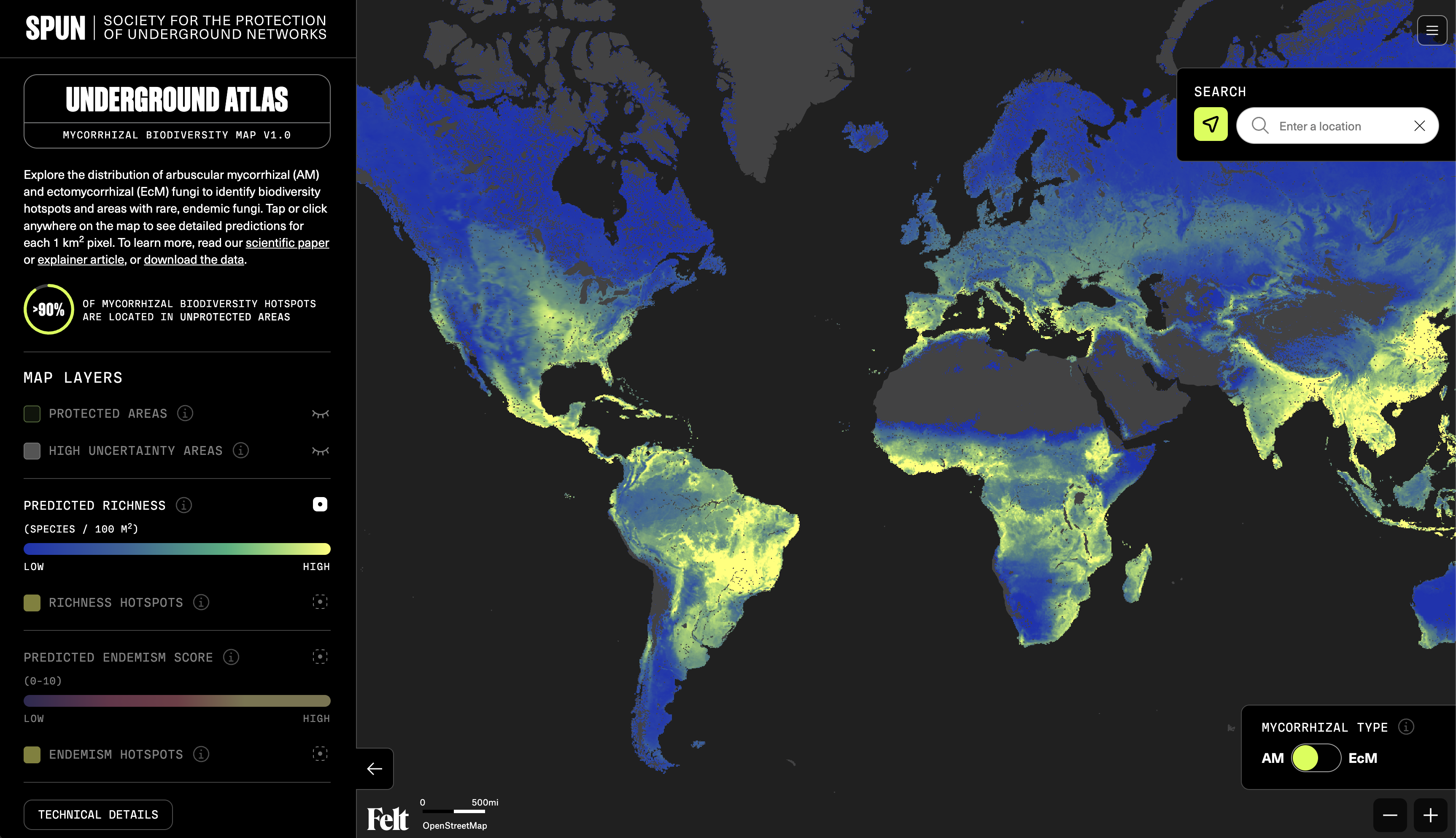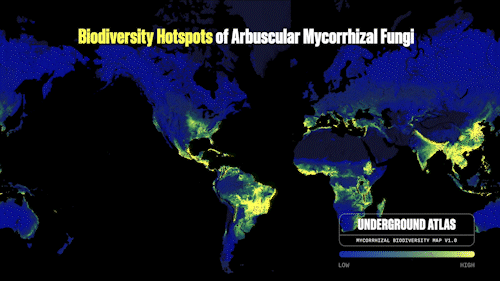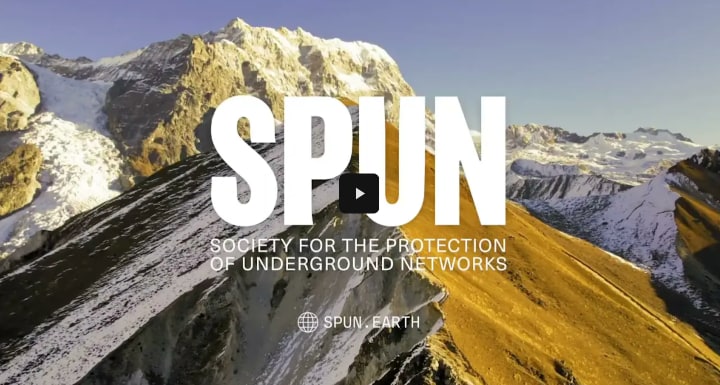The Underground Atlas is live — 2.8 billion fungal sequences, one global map
We are introducing a new digital tool for predicting mycorrhizal biodiversity and endemism across Earth’s underground ecosystems. This is the first step towards integrating mycorrhizal systems into global biodiversity, climate, and restoration targets.
article link
Since our launch in 2021, SPUN has been working with collaborators around the world to bring attention to mycorrhizal fungi and advocate for their protection. An important step in that process is to better understand the biodiversity and endemism patterns of mycorrhizal communities across underground ecosystems.
Today, we have published research in the journal Nature that brings us one step closer to that goal. Using more than 2.8 billion fungal sequences sampled from 130 countries, we worked with GlobalFungi, Fungi Foundation, the Global Soil Mycobiome consortium, and researchers around the world to predict patterns of fungal richness and rarity across biomes — from the Amazon to the Arctic. This work allowed us to identify predicted hotspots of biodiversity and endemism for both arbuscular and ectomycorrhizal fungi. This marks a major breakthrough in how we understand and visualize life beneath our feet.
Our findings are now accessible through the Underground Atlas, an interactive tool that allows you to explore mycorrhizal diversity patterns anywhere on Earth. This represents the first step toward integrating mycorrhizal systems into global biodiversity, climate, and restoration targets.

Underground Atlas
Explore underground hotspots of fungal biodiversity and rare fungal species. By overlaying these patterns with a map of protected areas, you can see which communities are currently unprotected.
The platform enables decision-makers to search for underground ecosystems predicted to house unique, endemic fungal communities and explore opportunities to establish underground conservation corridors. It reveals where rare and hyper-diverse underground communities live — from Siberia's boreal forests, to Ghana's rapidly eroding coastline, to Ethiopia's Simien Mountains — and makes clear how little of this biodiversity is currently protected.

What we’re seeing needs urgent attention. Over 90% of mycorrhizal biodiversity hotspots lie outside protected areas. That’s a staggering gap in global conservation — one that has profound implications for carbon storage, food security, and ecosystem resilience.

This is our clearest opportunity to include mycorrhizal fungi climate and conservation agendas. Let’s get these data into the hands of decision makers. Help us push fungal conservation even further.
▶️ Watch the Underground Atlas explainer video

🔍 Explore the Underground Atlas

📄 Read the research in Nature
📢 Share the story
Your voice can help shift global priorities underground. Share the Underground Atlas on your social media accounts and tag us at the handles linked below.







